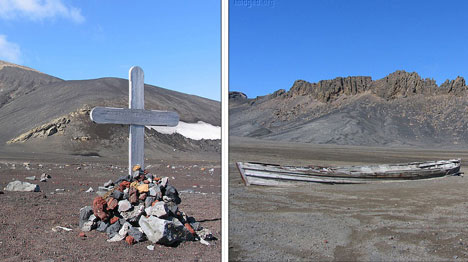Vía weburbanist descubro un interesante post (de los muchos que se pueden encontrar en este blog). Se trata de un listado de 20 ciudades abandonadas en todo el mundo. En el listado no aparece ningún lugar en España, aunque para eso ya está el blog de pueblos abandonados, que recoge información, incluyendo mapas y planteamientos relacionados con las ecoaldeas (aquí un enlace a la Red Ibérica de Ecoaldeas). Y en otro blogtenemos también una selección de otras ciudades.
Hay un encanto o una estética del abandono y de la decadencia presente en estas fotos, pero también en las historias que encierran. Como esas ciudades de Estados Unidas nacidas al albur de la Fiebre del Oro. Me pregunto dónde estarán algunas ciudades hoy punteras dentro de 300 años.
Por su interés, transcribo íntegramente, sin que sirva de precedente (y ya son varias las veces que pongo el ajetreo veraniego como excusa):

There are many reasons why cities are abandoned; some, like the ghost towns of the American West, have become tourist destinations while others have been condemned or simply forgotten. These 20 abandoned cities of the world share an eerie, haunted quality that is part of what makes them so fascinating. For more amazing abandoned places by region visit the WebUrbanist abandonments archive.
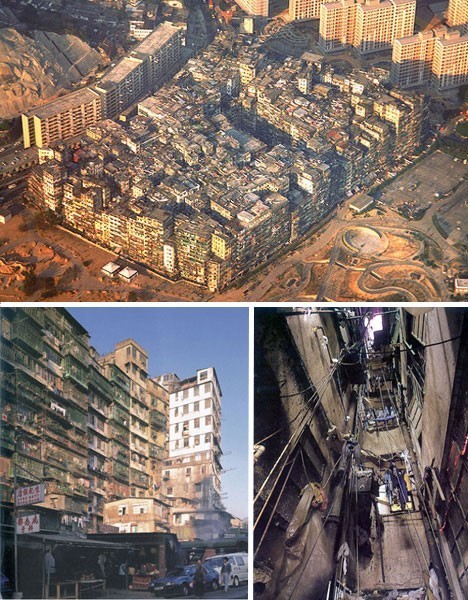
1. The Kowloon Walled City was located just outside Hong Kong, China during British rule. A former watchpost to protect the area against pirates, it was occupied by Japan during World War II and subsequently taken over by squatters after Japan’s surrender. Neither Britain nor China wanted responsibility for it, so it became its own lawless city.
Its population flourished for decades, with residents building labyrinthine corridors above the street level, which was clogged with trash. The buildings grew so tall that sunlight couldn’t reach the bottom levels and the entire city had to be illuminated with fluorescent lights. It was a place where brothels, casinos, opium dens, cocaine parlors, food courts serving dog meat and secret factories ran unmolested by authorities. It was finally torn down in 1993 after a mutual decision was made by British and Chinese authorities, who had finally grown wary of the unsanitary, anarchic city and its out-of-control population.

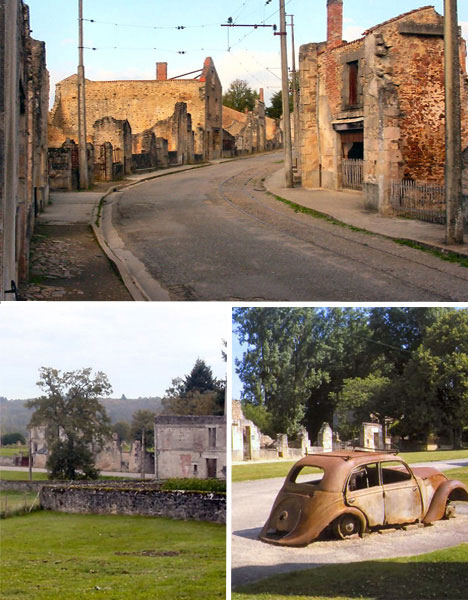
2. The small village of Oradour-sur-Glane, France, is the setting of unspeakable horror. During World War II, 642 residents were massacred by German soldiers as punishment for the French Resistance. The Germans had initially intended to target nearby Oradour-sur-Vayres and mistakenly invaded Oradour-sur-Glane on June 10th 1944. According to a survivor’s account, the men were herded into barns where they were shot in the legs so they would die more slowly. The women and children, who had been held in a church, all perished when their attempt to escape was met by machine-gun fire. The village was razed by the Germans afterward. Its ruins still stand today as a memorial to the dead and a reminder of the events that took place.
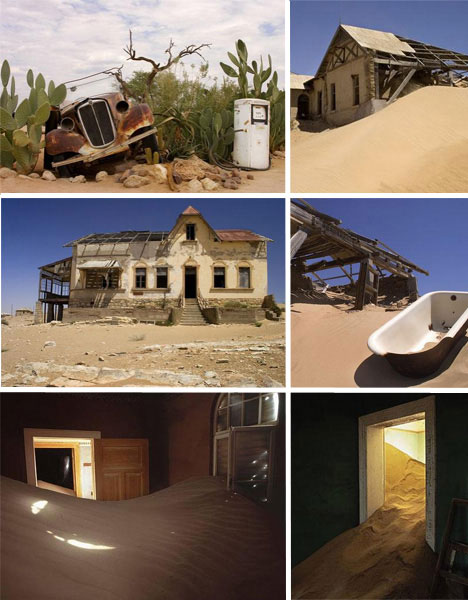
3. Kolmanskop is a small town located a few miles inland from the port of Lüderitz in Namibia. Windswept sand has made its way into nearly every building in the town, which was once a diamond mining town and abandoned in 1956 as diamond demand declined and richer sources of diamonds were discovered in other areas. Its only residents are now birds, hyenas and other animals.
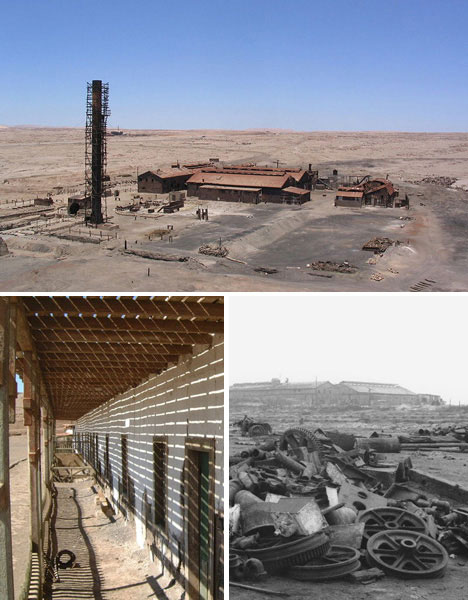
4. Humberstone, Chile was a booming town from the 1920s until the early ‘40s, enjoying the wealth and prosperity that came from mining and processing nitrate, also known as saltpeter. Once synthetic saltpeter was invented, the town began to decline and experienced a slow outpouring of residents until it finally lay empty in 1961. Since then, the blowing sand from surrounding deserts has made its way into the remaining buildings, which still house machinery and furniture. The town has been named a World Heritage Site and will likely be preserved as a historical monument.
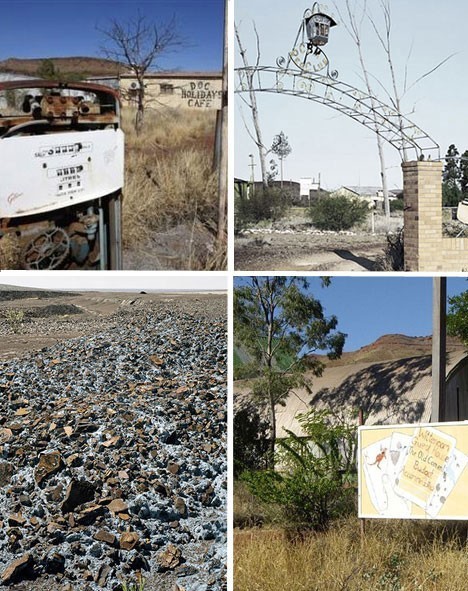
5. Wittenoom, Australia was once home to 20,000 people in its mining heyday. The asbestos mining town effectively shut down after the health risks of asbestos became clear in the ‘60s, and 1,000 residents died of asbestos-related illnesses. The remaining residents left, aside from the 8 people who still live there today. The city is littered with the blue fibers of asbestos, which can be seen in the bottom left photo above.

6. Only 30 minutes from the south side of Chicago lies Gary, Indiana, established as a company town for U.S. Steel in 1906. When the steel industry took a downturn in the ‘60s, the town became depressed and has never recovered. Gary, which has oft received the dubious honor of the murder capital of the U.S., is beginning to see signs of revitalization and is still home to thousands of people, but by the looks of its downtown area you’d never know it.
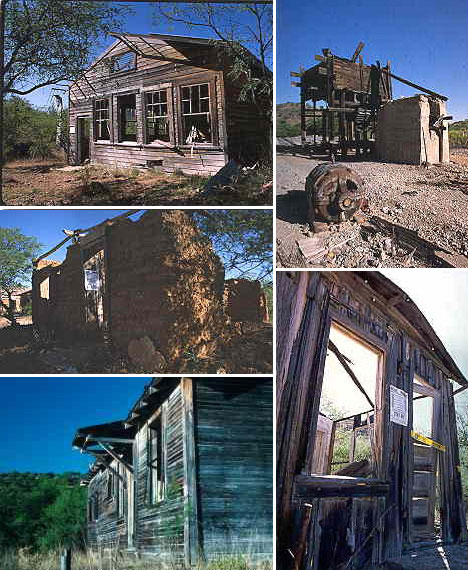
7. Ruby, Arizona is one of the best preserved ghost towns in Arizona, but you can only gain access to it by helping in the restoration effort. It was founded as a mining camp, producing mostly copper, lead and zinc. At its peak in the mid ‘30s, Ruby’s population reached 1,200. The population diminished after the mine was closed in the ‘50s. The few buildings that remain include the jail, a schoolhouse, mine offices and a handful of homes.

8. The eerie city of Agdam, Azerbaijan was once a thriving city of 150,000 people. It was lost in 1993 during the Nagorno Karabakh war; though the city was never the setting of combat, it fell victim to vandalism while occupied by Armenians. The buildings are gutted and empty, with only the graffiti-covered mosque remaining intact. Agdam residents have moved to other areas of Azerbaijan, as well as into Iran.
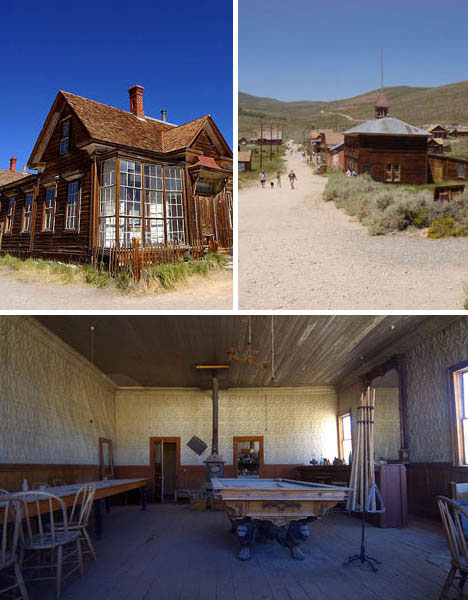
9. Bodie State Historic Park in California is one of the many gold-mining ghost towns in the American West. The town of Bodie once had 10,000 residents during the gold rush; the last of its residents left during the ‘50s and ‘60s. Only a small part of the town still stands today, but what remains has been well preserved. Interiors remain as they were when Bodie became a National Historic Site in 1962, with goods stacked on the shelves. Bodie is now frequented by tourists, but its ghost town atmosphere is intact – there are no commercial facilities in the area.
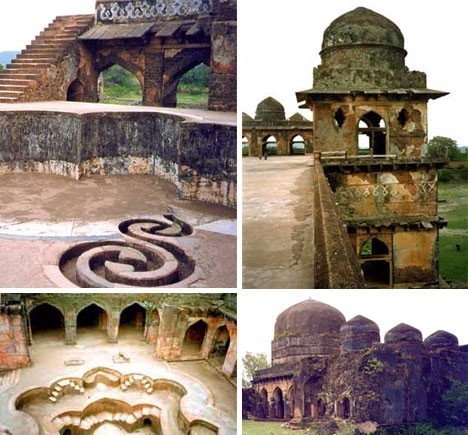
10. Located south of Indore in the state of Madhya Pradesh, Mandu was once the capital city of a northern Indian Muslim state and has lain abandoned for over 400 years. The ancient city takes up a large plateau just above the Narmada River and is home to a dazzling array of ruins, including a royal palace and a mosque. The Nil Kanth Palace is an important pilgrimage point for devotees of the Hindu goddess Shiva. Today, the city’s only residents are gypsy tribes who live on the hilltop plateau.

11. Kadykchan was one of many small Russian cities that fell into ruin when the Soviet Union collapsed. Residents were forced to move to gain access to services like running water, schools and medical care. The state moved them out over a period of two weeks, and they were taken to other towns and provided with new housing. Once a tin mining town of 12,000 people, the city is now desolate. In their hurry to leave, residents left their belongings behind in their homes, so you can now find aging toys, books, clothing and other objects throughout the empty city.
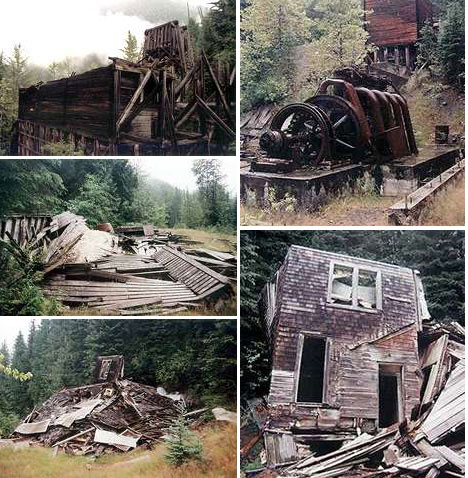
12. The small town of Cody was established in what has been called the ‘Valley of the Ghosts’ in British Columbia in the 1890s during the silver boom. Named after silver prospector Henry Cody, the town was expected by residents at the time to surpass other nearby towns in size and greatness. At the pinnacle of its success, though, Cody only had 150 residents, and when the town failed to attract more people it was deserted in 1910.
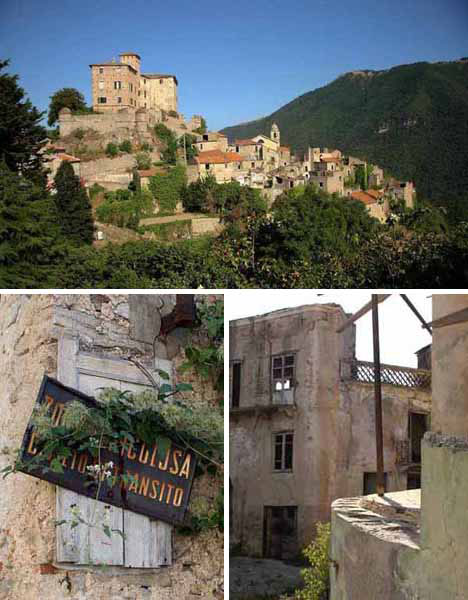
13. Balestrino, Italy is just as picturesque as many other medieval Italian towns, with its stunning hilltop location 70 km southeast of Genoa. Once owned by the Benedictine abbey of San Pietro dei Monti, Balestrino began losing its population in the late 19th century as earthquakes struck the region and damaged property. In 1953, the town was abandoned due to ‘geological instability’. The part of the town that has remained untouched since that time is currently undergoing planning for redevelopment, so it won’t remain abandoned for much longer.
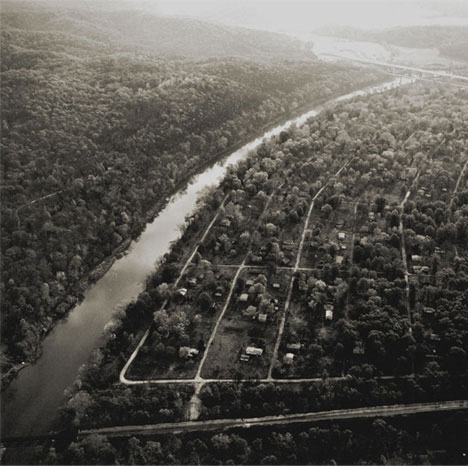
14. Once home to 2200 residents, Times Beach, Missouri stood empty and condemned for over a decade. It’s the site of one of America’s worst pollution disasters. From 1972 to 1976, city officials had waste oil sprayed on the unpaved roads to alleviate a dust problem. Unfortunately, that waste oil contained dioxin, a toxic carcinogen and component of Agent Orange. The dioxin permeated the soil and flooding further spread it through the town. After a long cleanup effort, the town has been reborn as Route 66 State park.
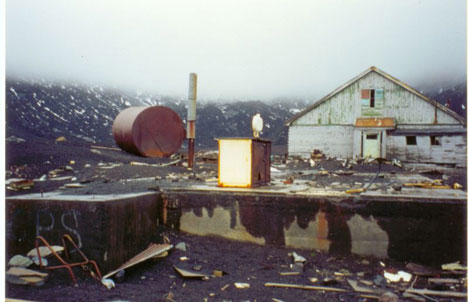
15. Deception Island is located in the South Shetland Islands off the Antarctic Peninsula. One of the area’s only safe harbors, Deception Island offered a refuge from storms and was also the site of several research stations and whaling operations. Many buildings have been abandoned there due both to a decline in the use of whale oil and a volcanic eruption in 1969. The volcano has made it an unpopular location, but Spain and Argentina still have summer-only research stations there.
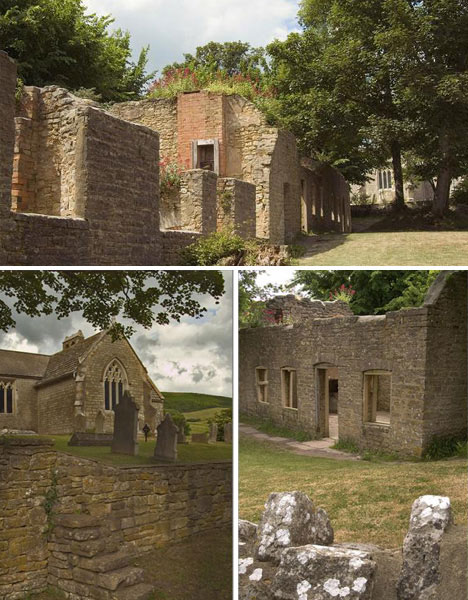
16. Tyneham is referred to as ‘the village that Dorset lost’. During World War II, the Ministry of Defence took over this town on the Isle of Purbeck in south England for use as an army base. Citizens were promised their homes back after the war ended, but were never allowed back in. It has stood as ghost village ever since, lying in ruins except for the schoolhouse and church that still stand relatively untouched. Schoolwork still sits on the aging desks, and a sign on the church still reads, ‘Please treat the church and houses with care; we have given up our homes where many of us lived for generations to help win the war to keep men free. We shall return one day and thank you for treating the village kindly.’
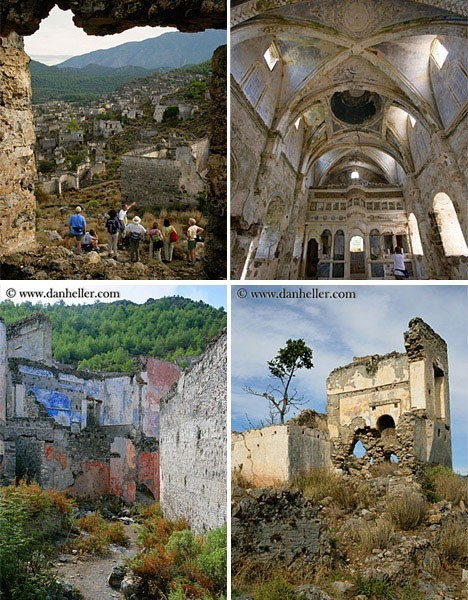
17. Kayakoy, Turkey was once a thriving Greek village, home to 25,000 people. In 1923, the town was completely deserted when its inhabitants, along with millions of other Greeks in Turkey, were forced out of the country due to the Greek war of independence. Since then, the village – which had been populated since the 13th century – has stood empty and deteriorating. Kayakoy is the largest and most well preserved ghost village in Asia Minor.
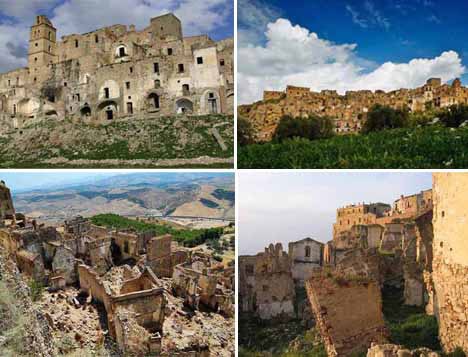
18. The medieval village of Craco, Italy was built on a very steep summit for defensive reasons, in a dry and mostly vegetation-free area in the south of the country. Over the centuries, this village lost residents due to a plague, French occupation and civil unrest, and finally lost nearly all of its residents between 1892 and 1922 as they fled for America due to poor agricultural conditions. Earthquakes in the ‘60s forced the remaining occupants out of the city, and it’s now completely uninhabited.

19. Polish officials have been trying to get rid of the village of Klomino for years; it was last on the market for €2 million, but most of its remaining buildings were demolished after lack of interest and locals destroyed what was left. Klomino is the only official ghost town in Poland, built solely as living quarters for the Russian Army. It has lain empty since the Red Army withdrew its forces in 1992.
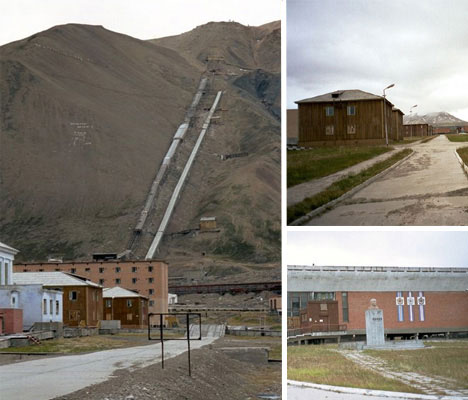
20. Pyramiden, Norway was a Russian settlement and coal mining community founded by Sweden and sold to Russia in 1927. The settlement once had a population of over 1,000 people but has been empty since its owner, the state-owned Soviet company Arctikugol Trust, abandoned it in 1991. The buildings still stand today exactly as they were when it was still in use. Tourists can access it for now by snowmobile or boat, but Russia plants to redevelop it soon. Want more? Check out strange and fascinatingabandoned towns, cities and other places in Europe, Russia and the United States.
